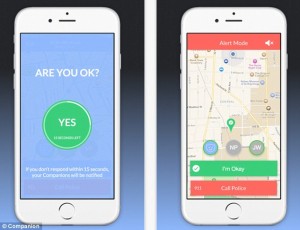 We can’t do much about the crime and violence in our country, but we can utilise technology to try and improve our safety.
We can’t do much about the crime and violence in our country, but we can utilise technology to try and improve our safety.
One example of this is an app created by five University of Michigan students who were concerned about safety on their campus – something we can identify with after recent incidents on our own campus.
The Companion app tracks your route as you head home and allows you to add a virtual companion, one of your contact, whether it’s a friend, family member or boyfriend/girlfriend. The concept is that this will make you feel a bit safer and less anxious while walking alone.
The apps allows the other person to monitor your route by GPS and also provides the means to raise an alarm if something should happen. Apart from tracking you via GPS, it also occasionally asks you whether you are ok. If you don’t reply, it will then notify your contact. The same action is executed when a trip is taking longer than the expected time, you start running or your earphones are pulled from the device. You then have 15 seconds to respond before an alert is send.
Companion also has two alert buttons. One reading “I Feel Nervous”, which will contact your companion and “Call the Police”, which will alert emergency services. One of the biggest advantages of the app is it’s ability to show exactly where a user is, so he/she can easily be located by GPS coordinates.
Users of Companion type in the address of the destination on the app and click “Start a Trip”. You are then prompted to “Add Companions” from your contacts. The contact receives a text to download the app, but can also just click a link to track the route on a live map.
Once you are home safe, the app will send a message to your companion.
Companion can be downloaded for free on iOS and Android.
[SOURCES: http://gadgets.ndtv.com, http://www.theguardian.com, http://fortune.com]





